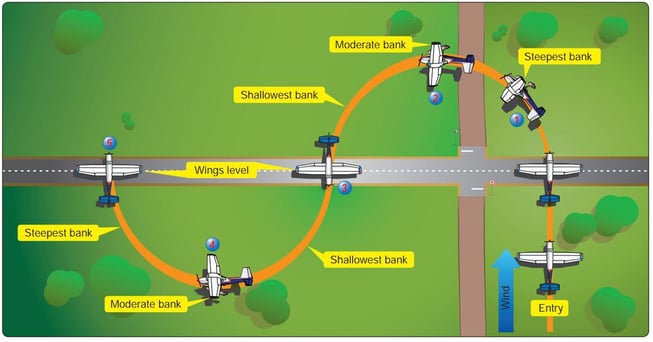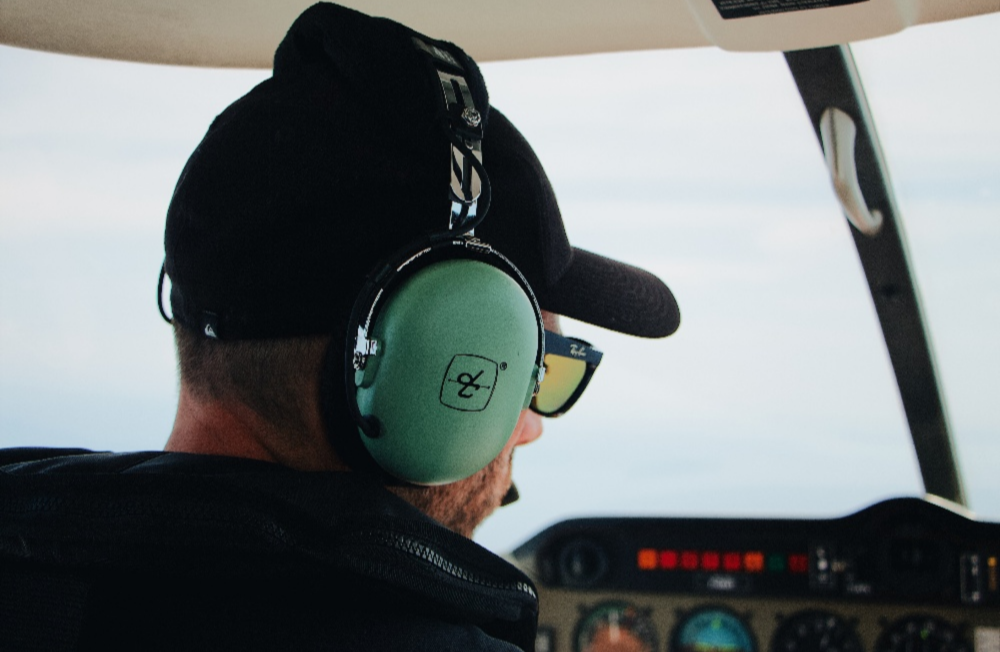The Anatomy of a Perfect S-turn
There comes a time in every pilot's life when they will perform an S-turn. Often it is done to create space between two airplanes at a towered airport. If you are the second airplane to land, the air traffic controller may ask you to do one of these turns to eat up some time but continue heading toward the runway to avoid overtaking the aircraft you are following.
The S-turn is a ground reference maneuver in which the airplane’s ground track resembles two opposite but equal half-circles on each side of a selected ground-based straight-line reference, such as a road, railroad track, power line clearing, or hedgerow. If we watched the airplane from above, we would see its track make a giant S over the ground.
The objectives of S-turns across a road are as follows.
- To maintain a specific altitude between the airplane and the ground.
- To divide attention between the flightpath, the ground-based references, outside hazards, and inside instruments — all while manipulating the flight controls to maintain positive control of the aircraft.
Executing the Maneuver
During the maneuver, the pilot must adjust the bank angle during turns to correct for ground speed changes and maintain a constant radius turn. The higher the ground speed, the steeper the bank angles can be. When ground speed is lower, the bank angles should be shallower.
The pilot should take care to roll out from a turn with the required wind correction angle to compensate for any drift caused by the wind. The pilot should establish and adjust the wind correction angle to maintain the track over the ground. This will be dynamic, and the pilot needs to develop the ability to compensate for drift in quickly changing orientations. The pilot needs to arrive at specific points — such as wings level — on required headings.
After clearing turns, the pilot should select a ground reference road. Then, they should determine the direction of the wind.
The pilot should enter the maneuver on the downwind, where ground speed is greatest. The roll into the turn should be rapid, the turn coordinated, and the bank angle must be steepest when initiating the turn.
 Photo courtesy of the Airplane Flying Handbook
Photo courtesy of the Airplane Flying Handbook
The maneuver consists of crossing a straight-line ground reference at a 90° angle and immediately beginning a 180° constant radius turn. As the first turn progresses, the pilot should decrease the bank angle and rate of rollout as the ground speed decreases, ensuring that the turn’s radius is constant.
When the airplane is at the 90° point of the first turn, it will be directly crosswind. In addition to the rate of rollout and bank angle, the pilot must control the wind correction angle throughout the turn. The pilot’s manipulation of the controls should be smooth to avoid slips and skids in the turns.
The pilot should adjust the roll rate and bank angle for wind drift and changes in ground speed and re-cross the straight-line ground reference in the opposite direction just as they complete the first 180° constant radius turn.
The airplane should be wings level over the road. Then, the pilot should make a second 180° constant radius turn in the opposite direction.
Again, the pilot should adjust the roll rate and bank angle to compensate for wind and changes in ground speed, aiming for the wings to be level as the airplane re-crosses the straight-line ground reference as they complete the second 180° constant radius turn.
As the turn progresses from the downwind to the upwind, the pilot should gradually decrease the bank angle with coordinated aileron and rudder pressure and reference the airplane’s nose and wingtips — and the ground references — to adjust the rollout timing so that the airplane crosses the straight-line ground reference with the wings level and at the proper heading, altitude, and airspeed.
As the airplane re-crosses the ground reference line, the pilot should immediately begin the turn in the opposite direction. The airplane is now upwind. Therefore, the bank angle should be shallow as the ground speed is at its lowest.
As the aircraft progresses on the S-turn, the wind changes from upwind to crosswind to downwind. The pilot should adjust the bank angle to compensate for changes in ground speed.
Related Content: Traffic Pattern Work: Get a Leg up on the Airport
Common Errors
- The failure to adequately clear the area for safety hazards, initially and throughout the maneuver.
- The failure to establish level flight before entering the maneuver.
- The failure to maintain altitude during the maneuver.
- The failure to properly assess wind direction.
- The failure to properly execute constant radius turns.
- The failure to manipulate the flight controls in a smooth and continuous manner when transitioning into turns.
- The failure to establish the appropriate wind correction angle for each turn.
- The failure to apply coordinated aileron and rudder pressure, resulting in slips or skids.
Share this
You May Also Like
These Related Articles

Four Tips for Mastering ATC Communications
.jpg)
Preventing Hazardous Attitudes in Aviation
